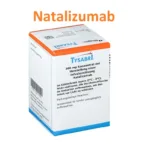The 2023 ADA Glycemic Targets Recommendations are summarized here. Achieving glycemic targets is important to delay or prevent diabetes-related complications.
The results of A1C, Fasting Blood Glucose, 2-hours post-prandial glucose, and continuous glucose monitor readings may differ especially in individuals with blood disorders, hemoglobinopathies, pregnancy, and individuals who are taking hematinics (supplements to improve anemia and red cell indices) [Ref].
| Glycemic Assessment: ADA 2023 recommendations: |
|
A1C to blood glucose chart:
The A1C-derived average glucose (ADAG) chart is presented here. The data is derived from a large-scale study.
A1C | Blood Glucose (mg/dl) | Blood Glucose (mmol/L) |
| 5 | 97 | 5.4 |
| 6 | 126 | 7 |
| 7 | 154 | 8.6 |
| 8 | 183 | 10.2 |
| 9 | 212 | 11.8 |
| 10 | 240 | 13.4 |
| 11 | 269 | 14.9 |
| 12 | 298 | 16.5 |
Hypoglycemia and Hyperglycemia have been classified by the ADA as either level 1 or level 2. The table summarizes here the classification of hypoglycemia and hyperglycemia:
Degree of abnormal blood glucose | |
| Level 2 hyperglycemia | TAR: Percentage of readings and time > 250 mg/dl |
| Level 1 hyperglycemia | TAR: Percentage of readings and time 181- 250 mg/dl |
| In-range blood glucose | TAR: Percentage of readings and time 70 – 180 mg/dl |
| Level 1 hypoglycemia | TAR: Percentage of readings and time 54 – 69 mg/dl |
| Level 2 hypoglycemia | TAR: Percentage of readings and time < 54 mg/dl |
| You may also like to read: |
ADA 2023 Glycemic Targets for Non-pregnant Diabetic Individuals:
The glycemic targets in non-pregnant diabetic individuals should be individualized based on multiple factors. These include:
- Risk of hypoglycemia
- Duration of diabetes
- Life expectancy
- Comorbid conditions
- Established complications
- Patient’s preferences
- Resource and support system
Risk Factors | More stringent control | Less stringent control |
| Risks of hypoglycemia | Low | High |
| Disease duration | Newly diagnosed diabetes | Long-standing diabetes |
| Life expectancy | Long | Short |
| Co-morbid conditions | Absent | Severe |
| Vascular complications | Absent | Severe |
| Patient’s preferences | Highly motivated | Less motivated |
| Resources and support | Readily available | Limited |
The A1C ADA Target recommendations:
ADA Glycemic Target Recommendations | A1C goal |
| The A1C goal for most non-pregnant diabetic individuals | <7% without significant hypoglycemia |
| Ambulatory blood glucose and continuous glucose range | For most individuals: Time Blood glucose in the range: >70% Time below range: <4% Time <54 mg/dl: <1% |
| For elderly frail individuals: Time Blood glucose in the range: >50% Time below range: <1% | |
| Strict control may be acceptable if the patient and the healthcare professional agree | < 7% |
| Patients with limited life expectancy and risk of hypoglycemia | <8% (64 mmol/mol) |
Pharmacologic therapies and lifestyle interventions are intensified if a diabetic individual does not meet the targets.
Other than the A1C, pre-meals, and peak post-meal blood glucose as measured by a glucometer or continuous glucose monitor should be optimized.
A summary of the ADA 2023 recommendations is given in the table below:
Summary of glycemic recommendations for most non-pregnant adults with diabetes | |
| A1C | <7% (53 mmol/mol) |
| Premeals capillary plasma glucose | 80 – 130 mg/dl (4.4 – 7.2 mmol/L) |
| Peak post-meal capillary plasma glucose | <180 mg/dl (10 mmol/L) |
| You may also like to read: |
Management of Hypoglycemia: ADA 2023 recommendations:
Hypoglycemia is a complication of most diabetes drugs. Novel antidiabetic drugs are usually not associated with hypoglycemia.
Diabetes drugs that are associated with hypoglycemia are:
Drugs that are associated with hypoglycemia | Drugs that are not associated with hypoglycemia |
|
|
| You may also like to read: |
Hypoglycemia: ADA 2023 recommendations:
Evaluate for the risk of hypoglycemia at every visit using validated tools
If the patient develops hypoglycemia:
- 15 to 20 gm glucose per oral is the preferred treatment if the blood glucose is < 70 mg/dl.
- The treatment may be repeated if hypoglycemia persists after 15 minutes of oral glucose intake.
- The individual should consume a snack or take a regular meal once hypoglycemia improves.
If hypoglycemia is severe (level 2 or level 3 hypoglycemia), glucagon should be administered. Glucagon can be administered by care providers, teachers, parents, or anyone at home. Its use is not limited to healthcare providers.
In patients with one or more episodes of hypoglycemia unawareness should prompt the physicians to raise the target blood glucose for that individual.
In addition, the cause of hypoglycemia should be investigated in all patients.
Classification of Hypoglycemia | |
| Level 1 hypoglycemia | Blood glucose between 54 – 69 mg/dl (3 – 3.9 mmol/L) |
| Level 2 hypoglycemia | Blood Glucose < 54 mg/dl (3 mmol/L) |
| Level 3 hypoglycemia | Severely symptomatic hypoglycemia when the patient needs assistance to correct hypoglycemia |
| You may also like to read: |



